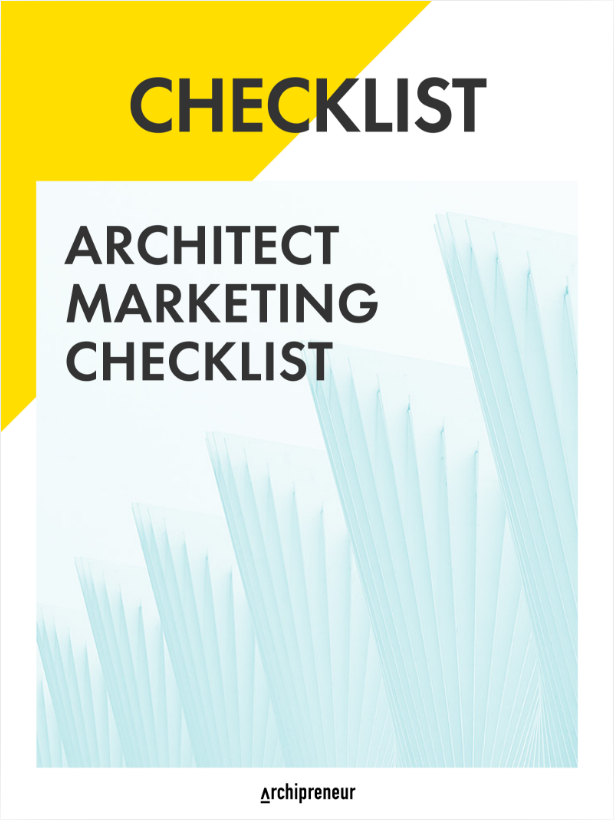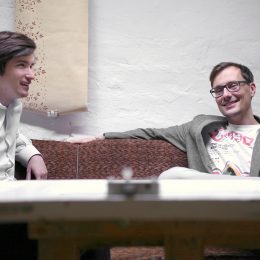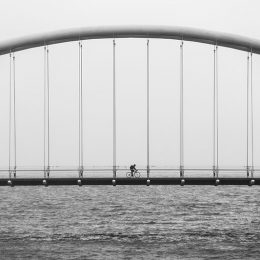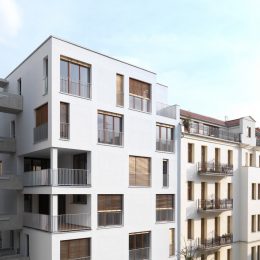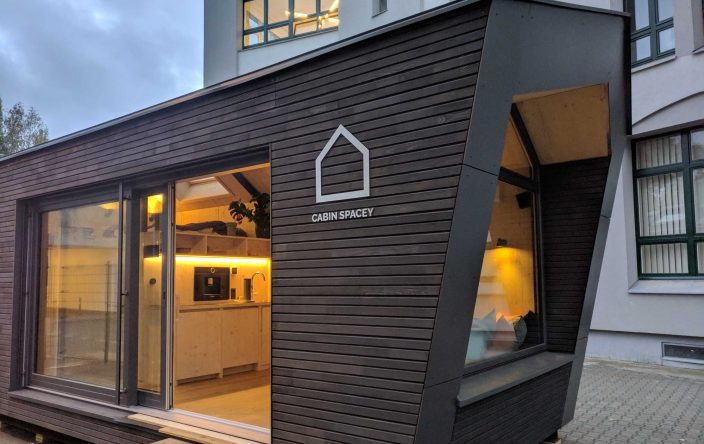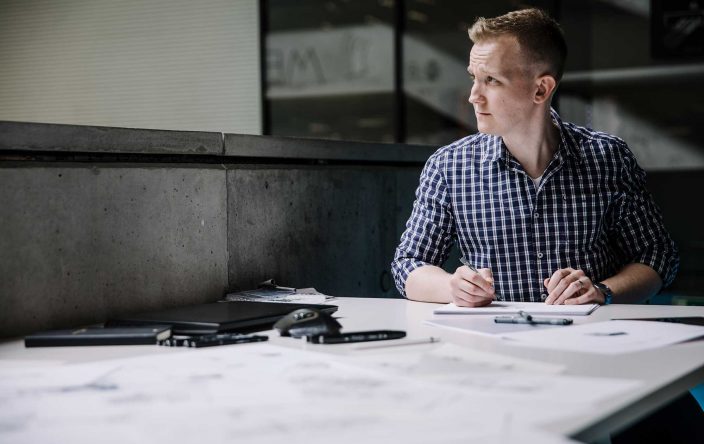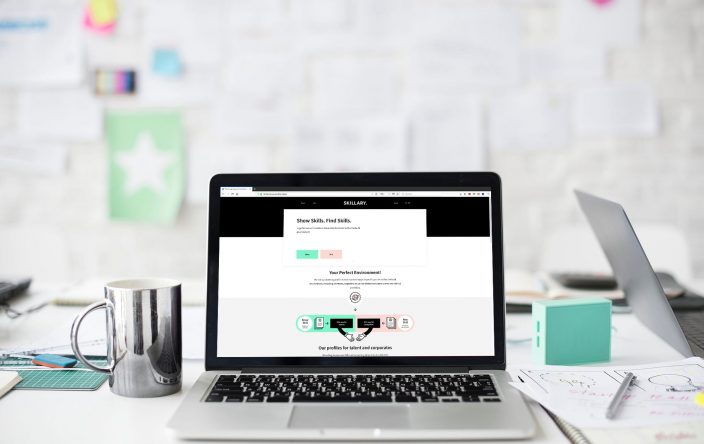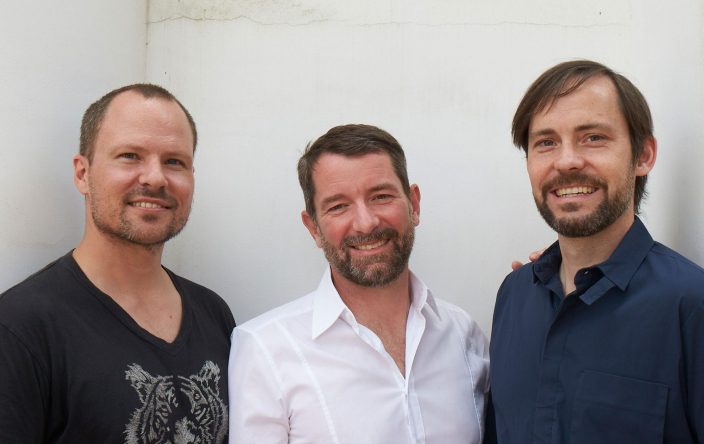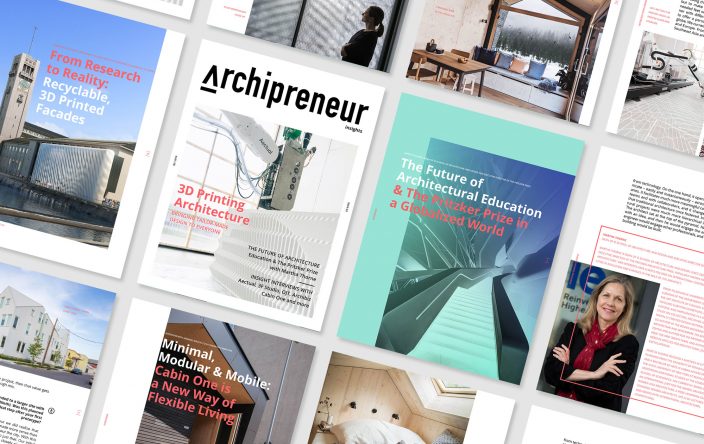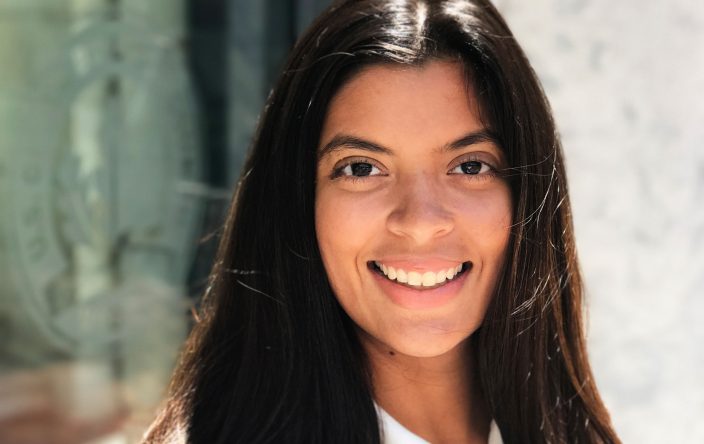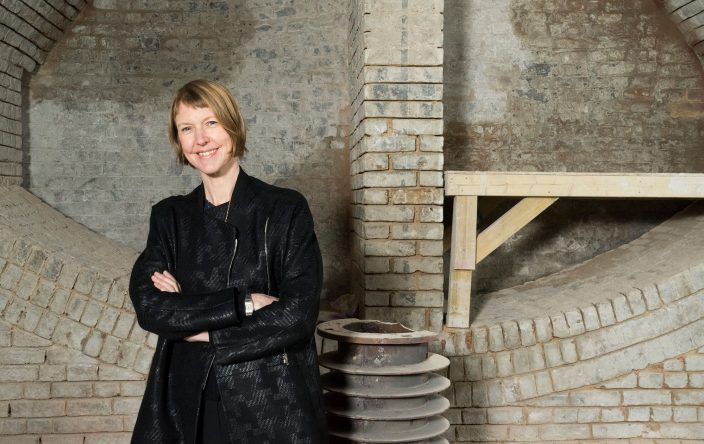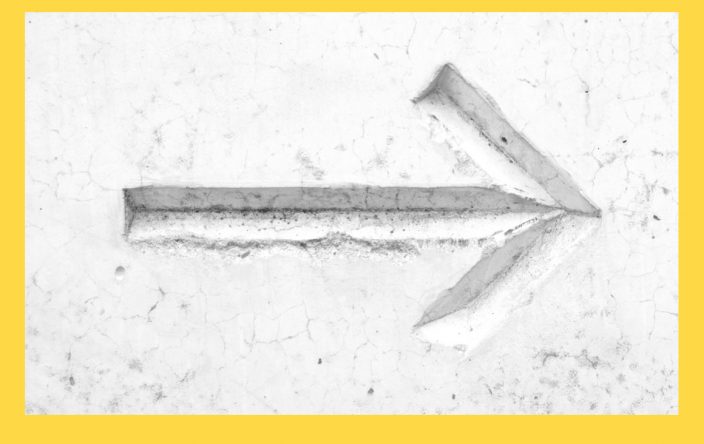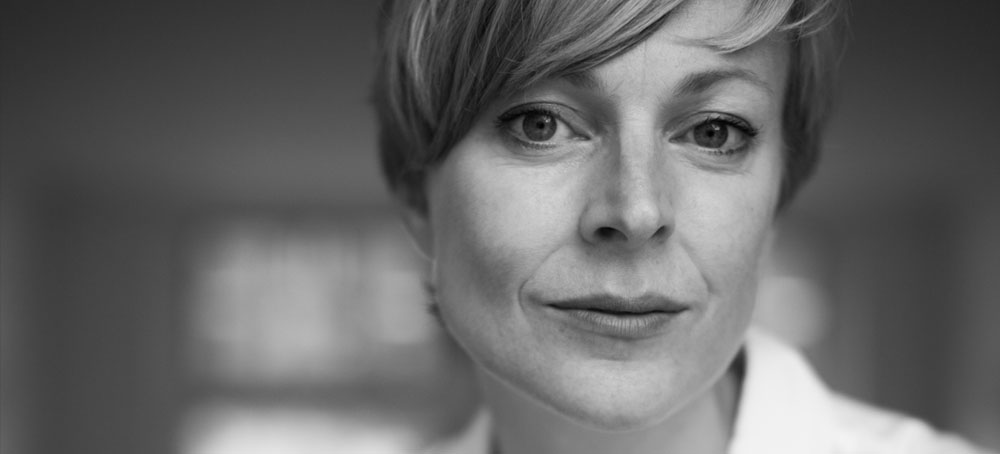
How to Influence Urban Planning Decisions from Below with TransformCity
Welcome back to Archipreneur Insights, the interview series with leaders who are responsible for some of the world’s most exciting and creatively disarming architecture. The series largely follows those who have an architectural degree but have since followed an entrepreneurial or alternative career path but also interviews other key players in the building and development community who have interesting angles on the current state of play in their own field.
This week’s interview is with archipreneur Saskia Beer. Saskia is an architect by education and founded TransformCity, a digital platform connecting the municipalities with the different stakeholders of local projects. In that way, city users can influence their neighborhood, create local projects and connect with the planning authorities.
Saskias entrepreneurial journey began in 2008 when the crisis hit the market. As so many architects she lost her job during that time but started to create her own company as a result. It is an inspiring story that you will love and the idea of TransformCity fits right into our time where the sharing economy ideas evolve in all industries.
The interview was conducted in cooperation with David Kroll. David is an architect with German roots currently residing in Australia where he teaches architecture at the University of South Australia. He is particularly interested in new and alternative models of practicing architecture – beyond the traditional modernist image – in order to convey a better picture of the varied opportunities available to students.
Enjoy the interview!
What made you decide to start TransformCity? Was there a particular moment that sealed the decision for you?
Yes, there was a specific moment. I had been working on my ZO!City project for a few years already, and actually, it was around Christmas time between 2012 and 2013. I was getting to a point with ZO!City where the local network, the local information and the willingness that we encountered in the project was becoming so large that I was becoming the weakest link in the organization that I had built myself.
So I thought there are so many people in this area who have ideas and who would like to do something, but they have no idea who to address, apart from me. And I was just this old-fashioned, telephone central link who was connecting everybody. I realized that was crazy.
If I really wanted to organize this area in a sustainable way, I needed a much smarter solution to make sure that all the different people in this area have access to the same information and have access to each other and can exchange ideas and resources – so that they can self-organize instead of asking me all the time to organize everything for them. There was a lot of energy going to waste, a lot of ideas that people told me about that I would have liked to help to make happen.
And I thought, wow. If this local community had been connected directly to each other, then it would have been so much stronger and so much more effective. And that’s when I started to think that I needed to organize something that is not me in the middle but instead the network itself is in the middle. That’s when I started to think about what kinds of functionalities should be integrated in that solution, which led to the idea of making TransformCity.
What was your role at that time, in 2012 / 2013?
Just to give you a little bit of background, I was trained as an architect. I graduated in 2007, worked in different companies in Amsterdam and in Tokyo. And then I started my real first job in Amsterdam at the exact time when the crisis hit in 2008. So in 2009, I lost my job and I was looking for jobs, but there were none. So it was a pretty desperate situation.
And at the same time, there were a lot of spatial challenges in the city that the big developers or municipalities had withdrawn from and that had no solution, no owner, nobody who was taking care of it. So that’s when I decided to adopt one of those challenges which was Amsterdam South East office district, which is a very big office district with 30% vacancy. The municipality had to withdraw from their big top-down plans as they didn’t have the resources anymore.
So, nothing happened. Meanwhile, 26,000 people were working there on a daily basis and the area was deteriorating. And that’s when I thought, wow, okay the fact that there are no jobs doesn’t mean that the urban challenges have disappeared. It’s just that there are no clients anymore. But there are still stakeholders, so what if you somehow adopt the challenge and build your community, a support base, around it step-by-step?
That’s what I did and I started slowly by organizing ‘guerilla’ events in public spaces – we planted sponsored flower bulbs and made art works, things like that. And we started to organize a community, just on a really low budget using social media. But after a few years, we really built a community, also a community of decision makers among the real estate owners, the companies, the municipality and a lot of enthusiastic individual employees.
You know, when that started growing, we started to really get to know the area and what was going on, what larger trends were taking place. At one point, we had such an amazing database and such a network that not even the municipality had because that’s not the way they used to work.
So we were in a good position to organize so many things, but we didn’t have the organizational structure and the tools to organize it. That’s when I started to think, okay, we need something else. And that’s where the idea for the platform came from.
What kind of stakeholders are involved in your projects?
In most of Amsterdam, there is a ground lease construction so the ground is owned by the municipality but they lease the ground to private real estate owners. And in this particular office district, the real estate owners are mostly commercial, like investors or pension funds. It’s a very international, very diverse group of companies.
And at the time when I adopted the area, there were 120 office buildings and they were owned by 80 different owners that were rented out by a few hundred companies and 26,000 individual people were actually working there.
That was a very fragmented and complex stakeholder web. But at the same time, all those stakeholders had an interest in the area, which means together they have a lot of potential capital that you could tap into, and that’s what we did.
By establishing a community of makers, which is a bottom-up approach, you managed to influence local urban planning decisions. Is that right?
That’s right. We started from the bottom up, but a very important success factor is that from the beginning we included the municipality in what we did. Because we knew that they had a problem too. You know, they had a responsibility for this part of the city, but there was only so much they could do when the crisis hit and they didn’t have the resources to continue their initial plans.
What we tried to do from the beginning, but especially when things started rolling, was to be a neutral platform, where the ‘bottom up’ and the ‘top down’ could meet. We would not be like an association, representing the interests of the bottom up, going against the municipality.
Instead we really tried to build a platform where the two of them could meet – more or less like a level playing field, as far as that could be achieved. The municipality can share their plans and get feedback, but people from the community can also share their plans and build a local base of support. So it’s much more of a ‘360-degree’ exchange and collaboration.
I believe that’s what also made us survive in the long-term, that we were not clashing with official institutions but we were trying to connect them to what was going on in the community. It definitely started as a bottom-up thing but always in line with the longer-term, larger-scale visions. So, we really wanted to make sure that everybody’s ideas and interests were included in it.
Interesting! So, TransformCity is an online urban planning platform that aims to connect municipalities (top down) with users (bottom up). Could you talk a bit more about the business model behind it?
Yes, I can. But first, I should explain that there is a distinction I have to make between the business model of ZO!City our pilot project in Amsterdam South East, and TransformCity, the online platform.
Our business model for ZO!City is that we handed out memberships to real estate owners and adding a contribution from the municipality to it. So it is funded by real estate owners in the area, I think somewhere between 25-30% of them are part of it, so we don’t have all of them but it is growing now we have the platform. They pay an annual contribution in order to help the whole area to move forward. And the municipality is adding money to that, because they see value in a self-organized community like this, creating a more resilient area that is able to take co-ownership when things change.
Things will probably keep changing in our cities, probably even faster and more fundamentally than we’re used to now. The municipality wants to make sure that the city can cope with those changes. They really value the idea of having a well-connected local community, so there’s a way of collaborating.
ZO!City is a very local model and then we built the TransformCity platform, which is still in its first pilot stage. It’s not yet complete and we have things that we still want to improve. But since the pilot has been running, we had a lot of cities that showed interest in using the platform for their own local challenges.
We are working towards a license model so that cities can pay an annual license to use the platform locally. Depending on what they prefer, they can provide it as a public service, which I think it should be. But they can also still bring in local real estate owners, for example, by paying something for having a better representation online. But that would be up to that particular city.
Important is that we don’t charge individuals for using it, we don’t extract data or charge more money for more clicks. It is meant to be transparent, the city pays for it and then people can simply use it. It’s difficult enough to engage your people and your stakeholders, so you don’t want them to have to pay for it.
So your target customers are municipalities. Is that correct?
Mostly. Sometimes we have large corporations who develop very big urban development projects or housing corporations who own a very big part of the city and who have a transformation challenge. But I think 9 out of 10 times it will be a city.
Could you briefly tell us a bit more about the kind of services that TransformCity provides?
TransformCity takes all the different functionalities, stakeholders and data that we believe are relevant for the urban planning and development in one specific area and integrate it into one tool that helps to organize the whole process.
Instead of having 10 different apps doing a little bit and having different data visualization sites, we aimed to design one Swiss army knife for your city where you have all these things into one solution. We found out is not a very IT thing to do, because a lot of IT entrepreneurs and investors told us, “No, this is too complex. You should stick to single purpose. You do only engagement, only data or only funding.”
But when we talk to cities, they are actually very happy with this integral solution. It makes it much more easy for them to manage, but also to keep their community engaged. You will lose more people, the more apps you need them to download and the more platforms you need them to stay up-to-date with.
We wanted to organize this whole process into one platform where all these different stakeholders – the citizens, businesses, organizations, real estate owners, government – can directly exchange information, plans and ideas with each other. Everybody is informed and engaged and can take their own informed decisions or intervene and share ideas.
…so the map is a quite important component?
Yes, the map is important. It’s map based where all relevant objects, like buildings, parks, stations, are clickable and hold basic and in-depth thematic information. There’s a lot of data available, but we try to make a selection of what is relevant for this area. This will be the information backbone that a lot of stakeholders can profit from when they have easy access to it.
There’s also a timeline so you can appreciate the transformation process of the area. You can see what happened already or what has been put on the agenda already, maybe didn’t take place, and you can also see what the future plans and scenarios are so you can get engaged in a very early stage. But you can also share your own ideas and get your own support base organized. If you, as an average citizen, have an idea that turns out to be fantastic and people love it because they think, “Yes, why on earth did we never turn that piece of wasteland into a temporary park?” It’s a very simple example. It could also be something more large-scale, “Why did we not build something here?”
And one of the most important things is that we not only have this informing and exchanging, but you also have the execution. And I believe that’s one of the most important and distinctive factors that you can actually build alliances around your projects with crowdfunding, for example.
We saw the transformation of a neglected piece of grass land next to one of the stations in our pilot area. Some people were really fed up that they had to ‘crawl’ through the mud everyday to get to work. And they decided to launch an idea to formalize the path to turn it into a temporary park, a nice place. And then a real estate owner said, “Okay, but what if we could put a pavilion there that could be an information center and maybe a cafe or something like that?”
So people started to add ideas and ideas and ideas, and then it became one project that we supported, so it’s a combination of online and offline. And that became a crowdfunding campaign on the platform and more than €100,000 in total was brought in to actually make it happen. From individuals to municipality to company to real estate owner, everybody somehow contributed and they will collectively own it. So there’s this whole range of informing, discussing, organizing and owning that you can continuously organize through TransformCity.
So it’s much more than asking your community for feedback on your plans. It’s something that’s more structured and goes a lot deeper. I think our cities are ready for that. Well, they should be ready because they need this shared sense of ownership in order to be able to cope with the changes they are subject to.


Are you working on making your platform available internationally?
It is our ambition to scale worldwide. Since we launched the pilot we already got 25 requests from cities worldwide who are seriously interested in implementing the platform. Apart from the actual platform, we provide cities and their community managers with training and advice on how to build and manage their own local community and how to sustainably support local projects. We have a lot of valuable experience that we can share here, but in the end the local organizations with their networks will make it happen themselves.
The technical basis of the platform is the same everywhere, which makes it easy to scale and cost-efficient for cities to join. However there will probably also be very specific local aspects that are important to include but cannot be simply copied everywhere. This influence of the local context on the general technology fascinates me. How can we make it flexible enough so that cities can customise it themselves or pick their own modules?
This is why in our current scaling phase we are working with extended pilot partners, different cities with which we collaborate more intensively to understand the specificities of their local context and how this influences the further development of the platform. We may find that we can develop one solution that works in any context or maybe we will have to accept that in some places it doesn’t work. That is important research that needs to be done and I am happy that some cities are open to joining that research.
So it’s a pilot project at the moment? When you are expecting it to launch it?
It was launched already as a pilot in Amsterdam in May last year. Since then we tested it and at the same time worked on bringing in the resources needed to develop it further. We got a lot of valuable feedback and ideas, both from the local pilot community and from the other cities that approached us. It gave us insight in what stakeholders considered the most important features, what kinds of projects and ideas were shared and what we needed to improve in the design.
Sometimes the feedback is very direct. There is not always specific appreciation of urban planning or architectural innovation, so they just say, “I don’t get this, this doesn’t work, this looks ugly.” This is very straightforward feedback, but it’s also refreshing and really helpful for us to understand how we can make the platform better and better to work for everybody.
We also achieved some nice results in the pilot. The first crowdfunding campaign was completed successfully through the platform and interesting ideas were shared. Also we were approached by sustainability programs to collaborate on local initiatives. So things are taking place already, but I am always a bit impatient in what I would still want to improve.
But municipalities that would like to use the platform for a project can already sign-up. Is that correct?
Yes for sure! At this point they can still become an extended pilot partner, so we can bring in their input and requirements in the next development phase. We will start with an inventory. We have a checklist of questions that we need them to answer so we can get a better understanding of their local context. And then we will sketch out their local platform, which they can give us their feedback on before we build it. By doing so we can test and monitor their platform to see what is working and what is not working, what they would like us to improve, things like that.
We are in-between doing local projects and having one product that you can just order by clicking the button on our website. The advantage for these extended pilot partners is that they get a lot more influence on how the platform develops and more elaborate advice on how to implement it. And they get a discount too.
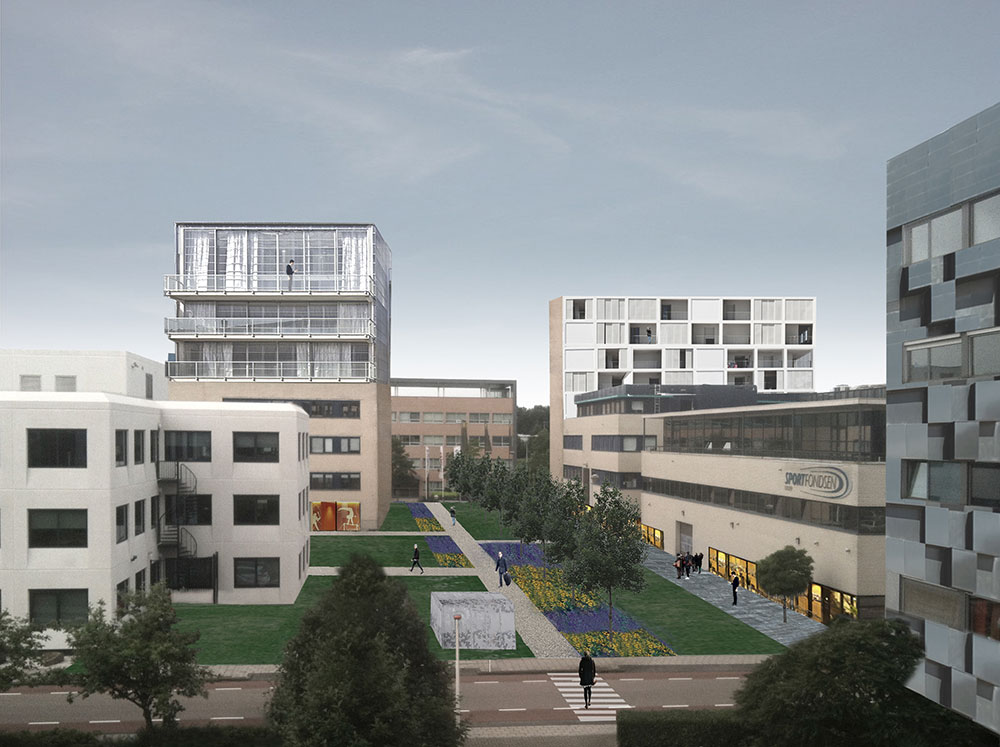
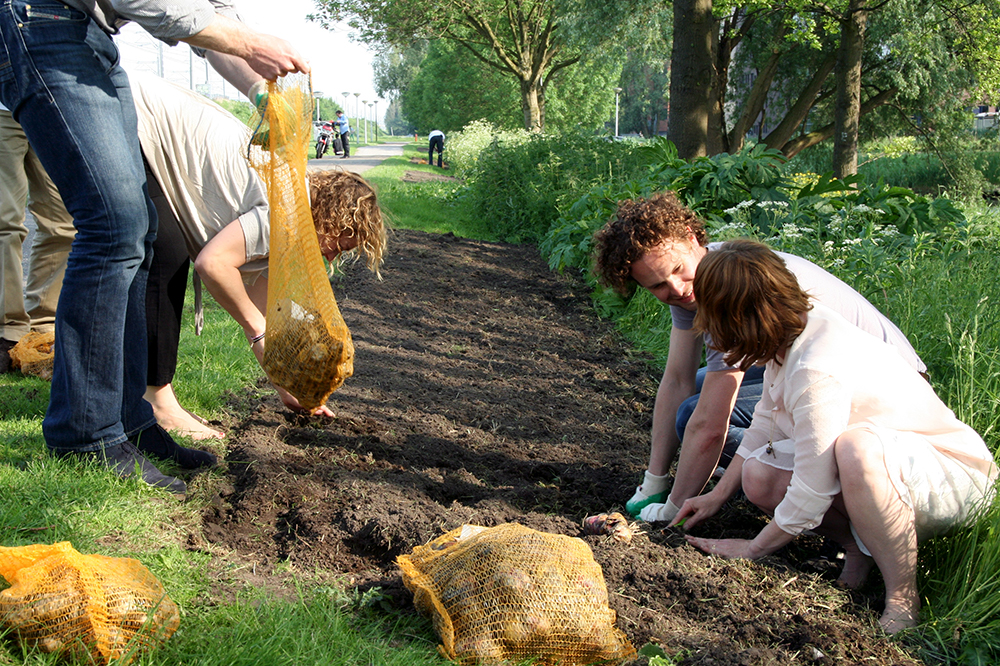
How is TransformCity financed?
That’s a good question. At the moment, I am asking myself the same question (laughing). Over the past few years, the local project was based on memberships of local real estate owners and the municipality. And we have quite a few possibilities for subsidies in the Netherlands and of course for European funding that you can have access to with private co-financing. And because we have the memberships, the contributions of the real estate owners, we have a private budget that we could use to apply for additional subsidies.
For the pilot development we formulated a larger project, which was a mix of local activities focused on collaborative smart mobility and platform development. By doing so, we could combine ZO!City membership money from the real estate owners, a contribution from the municipality of Amsterdam and a subsidy from the Ministry of Infrastructure and the Environment that was focusing on reducing traffic jams in rush hour (Beter Benutten Vervolg programme). The first projects, datasets and crowdfunding campaigns on the platform were all focused on stimulating alternatives for commuting by car.
That’s how we started and, as we got so many enthusiastic requests from cities immediately after our launch, I hoped we could then simply scale using the revenues from those cities. It now turns out the time span cities need to take the actual decision on implementing a new platform like this is longer than I had expected. So while our prospects are still very enthusiastic, we also need to make sure we can keep improving and developing our pilot.
We are now finetuning arrangements for this with the municipality of Amsterdam. We are also talking with investors, but we are cautious to bring in investors who look at social impact too. There is definitely money to be made here, but there is also impact to be made and those two need to be in balance.
What major problems and opportunities do you think cities face in the 21st Century?
I see a few problems and opportunities. One of the major ones is that cities need to be much more flexible in coping with change. Because if I look at the world right now, there is so much happening and there is so much changing and it can be quite rapid – demographically, ecologically, economically or politically. You see all these things happening globally that can have such an enormous impact. If you look at how a city is being developed on a local level, I have the impression that a lot of cities do not realize what the impact of all these big changes can be on their local situations.
I see cities in the Netherlands now who seem to think the crisis is over and won’t come back. They saw this whole collaborative approach to urban development as something temporary to fill the crisis gap and now pick up their big top-down developments again. I think, and I’m not the only one, that they’d, better be careful, because something may easily change again . And then your projects and your city will be really fragile.
That’s what shocked me when the crisis hit in our pilot area. The big institutions did not have the resources to continue their plans. And then the area was just helpless,. There was no self-organization, it was carried by so few shoulders that without them it was just lying there.
So I really believe that by organizing multi-stakeholder local communities around the city will make it much more sustainable and adaptive to change. There will always be some stakeholders who have their interest in keeping the city livable. I think that is one of the main things we have to work on.
And also from a social perspective, if you look at what happened with Brexit and Trump and if you look at the Dutch election polls. This has to do with a large group of people who have felt left out and very detached from the decision makers, who don’t have the trust that they can have an influence on their daily lives or their environment. So the only moment when they can make their mark is once in the four years when there are elections and it doesn’t matter what they want, they just vote against what they don’t want.
I strongly believe that we need a much more continuous engagement and inclusion, listening to what people want and what they don’t want, taking their interests seriously, so they also have to take themselves seriously in thinking about the bigger picture. I believe that that will make a more balanced society.
Of course I cannot claim that TransformCity will save the world, but I do believe the engagement and inclusion issue is one of the most important issues that we need to solve. And if I am very honest about myself and about my peers, then architects are not always confronting those issues, at least not on a real level. Maybe on an intellectual or symbolic level, but I think there is a lot of work to be done and there is a lot of impact still to be made.
Today we face housing crises in many cities, London is one example. Can the TransformCity approach contribute to meaningful change in cities?
Yes, that’s a very legitimate question. I wish I would have a complete solution: just push this button and you can afford your house. But unfortunately, it’s not that easy.
We have a crowdfunding infrastructure underneath our platform. And every project and every idea is being put on the platform, whether it’s been put there by a real estate developer or individual citizen or the municipality or a housing corporation, it doesn’t really matter. Everybody who has something that’s contributing to the making of the area can share an idea or start a project.
They can build a local support base so they can see if people like the project, if people support the idea, if the municipality could support it. They can also investigate what the legal framework of the area is but also if, for example, there is a vacant building, you could actually build a collective around this too. They can purchase it so people can take actual shares in local projects, becoming a co-owner.
Apart from an individual investing time planting flower bulbs or something, which can be a meaningful thing with a more beautiful daily environment as a reward, there are also options to take an actual financial share in a local development. This could be a project developer that finances part of the project via the crowd instead of the bank. This could be very good for local engagement and enthusiasm about the project. But you could also leave the developer out and just collectively purchase a building as a community, keeping control over your housing costs.
That’s why I like that you mentioned London because I know that in England there is ‘Big Society’ i – the ‘Right to plan’, ‘Right to build’, ‘Right to challenge’. They have been a bit ahead of us with doing these things and with organizations like Locality who help communities to purchase assets and manage them and profit from them themselves. There are a lot of possibilities there which we try to facilitate, and hopefully, we will learn even more in the next year so we can facilitate it even more precisely.
At the moment, we have the ‘like’, ‘comment’, ‘share’ and ‘support’ buttons, so people can build a support base but maybe we can push this further in the future. that can, although the actual results will of course always depend on the local context and housing policies.
What would you like to say to architecture students and recent graduates about entrepreneurship in architecture? Do you have any particular career advice?
That is such a lovely question. What I would really like to say is that when you study architecture it’s really important that you keep an open mind to what is going on outside of the faculty. Because, in my personal experience, the architectural faculty can be a bit introverted. There is a very specific idea of what is good and what the ideal architect or career perspective looks like. There are a lot of fixed ideals.
I found out there are a lot of students who are unhappy within that very specific frame because they feel they may not fit in there. I mean that’s what happened to me. I wanted to be an architect since I was eight years old. And when I started studying, I thought I may not be the perfect person for this.
When I lost my job and started to work on urban development, I became aware again of the fact that the professional world was a lot larger and that there were a lot of other stakeholders, people and organizations doing meaningful work in the whole chain of making the city.
If somehow I had been aware of this, I would have been so much more comfortable in finding my own spot and strength as a designer. I think, and this was confirmed by quite a few people I know who studied with me back then, a lot of architecture students become insecure because they are afraid they don’t fit the right image to be an architect.
But of course there is this whole range of things that you could do, where you could really, really add value with your design thinking and your architectural approach that could perfectly fit who you are. So you have to keep an open mind and maybe meet up with others. Do not only drink beer with your architecture peers but just go to other places and meet other people and listen to how they are going about life. There might be some important input for your professional future there.
How have your architectural skills and training helped you in establishing and building TransformCity?
Yes. For sure, they did. I think there are a few things that really helped me. For one, I think that architecture as an engineering education, helped me to think in a very problem-solving way. You look at the situation, you analyze it, and then you think about how you could intervene in it to solve it. You can think of possible alternatives in a concrete way and, very important, you also have the skills and the tools to visualize them and communicate them to different people.
You can visualize in a way that an average stakeholder who may be a layman in the field of urban planning can understand your visualization and you can actually trigger their imagination. I use a lot of photo collages, so I took photos of the area and then I just put layers on top of it to show the difference between what it is and what it could be and how issues could be solved. We have this integral way of synthesizing all the things that we see and understand and bring them together into one coherent alternative or solution.
In the beginning of my working life I took these skills for granted. I thought that it was a self-evident thing that everybody had. And then at one point I started to understand that it is an added value, that not everybody sees this and this is why I can help other people to trigger their imagination. And I found out that some people would say, “Okay, but if this is possible, then maybe that is possible too.” So you are an urban imagination machine in a way, and I think that I could not have done that without my training.
Sometimes interventions or changes are not that difficult when you know how it works. I’ve encountered stakeholders in the area who had ideas for creating a cafe on their empty ground floor, but didn’t know how to split it from the office entrance.. You can give very easy advice there. Maybe it’s not how the capital ‘A’ Architect is intending to work. But there are some things that you can see very easily and where you can help others to think about other possibilities and then a whole different collective energy is starting.
TransformCity is collecting feedback about the needs and opinions of the people using the city. Do you think architects should learn to listen more in general?
Yes, I think that’s really important. I think that architects are trained to convince the audience by presenting them their great ideas. I really had to learn how to listen, and sometimes I still do, but once I did things went more smoothly. A remarkable anecdote is that one day a big real estate owner in the area said, “Are you really an architect? That’s strange, because you’re quite nice.”
Yeah, you’re laughing. I was laughing too, but it was quite sad, of course. Because he had this experience with architects who were only working to convince him of their opinion, their idea. On the other hand, I agree that for some decisions you really need professional expertise to understand the complexity and to bring all these things together into a good solution.
But I also experienced it the other way around where I thought of an idea and then somebody in the area just said, “No that doesn’t make sense, you know because I always walk past there and it’s always like this so it makes sense to do it like that.”
And he was right, his idea was so embedded in his daily experience that it made complete sense. Maybe I was making it too complicated and trying to solve it in some kind of, I don’t know, elevated way. Whereas this person just solved the problem. And that’s where apart from the listening also crediting the layman comes in, that you can actually say you’re right, let’s do it like this. And there is beauty in that too.
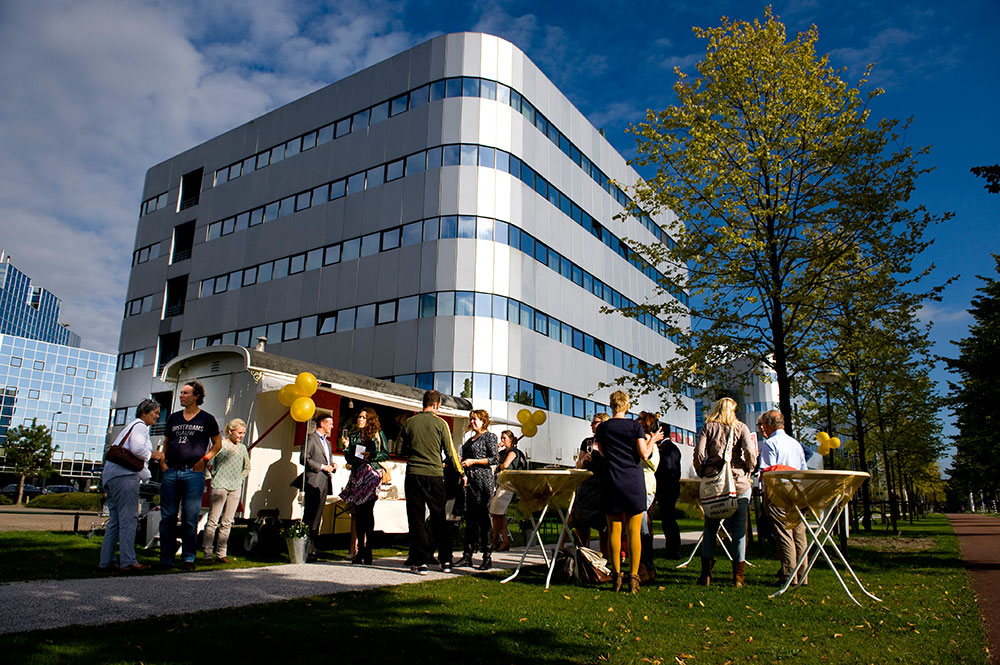
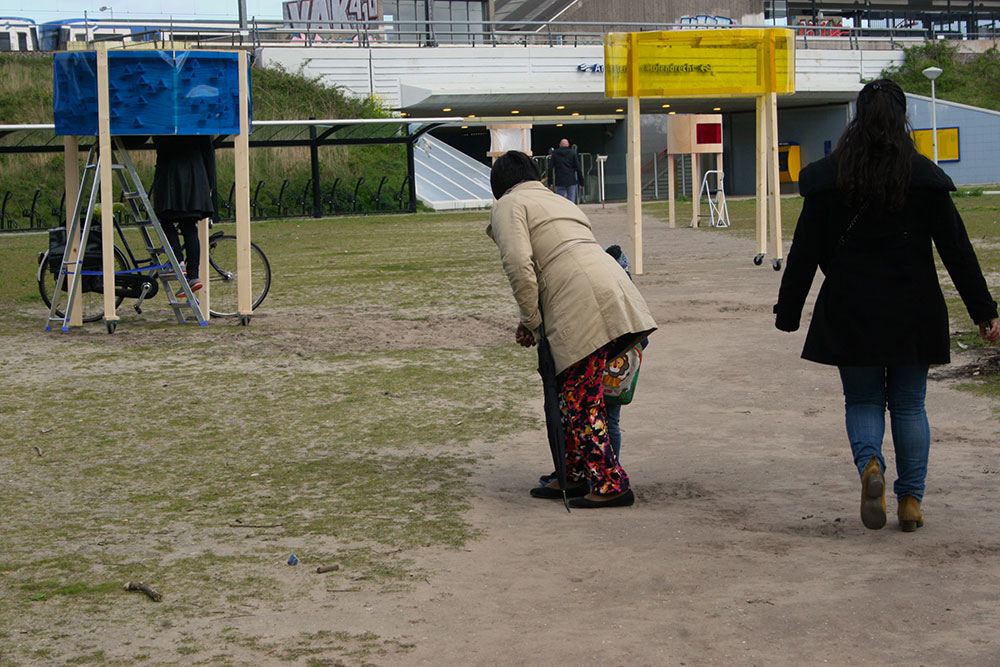
Does TransformCity enable decision makers and planners to make more informed design decisions?
That’s correct. But it also allows average stakeholders to take better-informed decisions. Because they have more information, they have more overview. They actually have access to information that otherwise only the professional would have, which allows them to take a more integral decision. For example I encountered employees who said: “I go to my office by car and I need parking space. You can pave the park or the station area. Just put asphalt there.”
Then the more information they are given about how this could work on a longer term, what it would mean for the quality of their lunch walk and how public transport would actually reduce their commuting time significantly, they start to appreciate the bigger scope and start to take into account many more aspects. It becomes more difficult for them to base their decision only on this single self-interest. That’s why I want to empower not only the professionals but also the community itself.
Are there particular courses, topics, or skills that we should have more of to prepare students for their careers?
I’m not sure whether it should be a complete subject or that it should be like a general attitude that I would like to see more interwoven into the whole education. What I would like to see is that there would be a subject or part of a subject, maybe just a presentation after every final presentation where you present your project to somebody who’s not in architecture or is not an architect. Just to test yourself beyond the professional language and in-crowd and see, how other people respond to what you just said.
Maybe you present to somebody from within the ‘chain’, maybe somebody from urban planning or real estate, or just an average citizen – to just make you aware that there are real people you are designing with or designing for. This would challenge you to sharpen your language. I forgot the name of the blog, but there is this blog that is mocking architect’s language. They feature a shocking number of texts from architects that are completely incomprehensible.
Having our own introverted bubble with our own language that only we understand makes us fragile. I saw it happening in the crisis. A lot of architects lost their jobs, including myself. And a lot of them were not able to make the turn to do something else. Some of them did, and a lot of them didn’t. Maybe they thought that as an architect they didn’t have to change. I think the curriculum could add some little things to make students more aware of the broader perspective and the outside world.
… a more interdisciplinary approach?
I think so. I think architects would definitely benefit from that because they are not crazy people or bad people. They have something very real to add, and the education should strengthen that.
How do you see the future of the architectural profession? In which areas (outside of traditional practice) can you see major opportunities for up and coming architects?
Well the risk would be that we would go all interdisciplinary and participatory. I think there’s real value in what we learn in architecture school now. But yes, I think the future is probably more interdisciplinary and more interwoven in society in general.
I think if we just learn to realize that we’re part of a broader context, improve our communication and learn how to better appreciate other people’s ideas, then maybe the rest doesn’t have to change. Having an open, collaborative and entrepreneurial attitude combined with your architectural expertise and personal interest can bring you to so many new opportunities, whether they are more about society, technology, art or business.
Do you have any advice for archipreneurs who are interested in starting their own business?
There is a lot going on in the existing city. So apart from –and sometimes instead of- greenfield developments, planning is becoming more about transformation of the existing built environment. My advice would be to look at this existing city and to look at the existing challenges that are out there, to look at who the stakeholders are there and what they have to lose or win.
There is business there if you can organize local support base around your own project. Investing your time and energy in creating your own projects may be much more opportune than participating in design competitions. The interesting thing is that other people may not see the challenges or the opportunities or may not know how to solve them because they’re too complex. And that’s where your architectural thinking comes in. You know how to analyse complex problems and sketch smart, coherent solutions. Don’t wait until there is a client, become your own client.
About Saskia
Saskia Beer is a Dutch entrepreneur and founder of ZO!City (formerly known as Glamourmanifest) and TransformCity®. She was trained as an architect and worked for renowned Dutch and Japanese offices. In 2009 she lost her job due to the crisis and decided to thoroughly redefine her role by unsolicitedly initiating local projects for making the city more attractive, inclusive and resilient.
In 2010 she unsolicitedly adopted Amstel3, a 250 ha office district in Amsterdam with a 30% vacancy rate. After the municipality had to withdraw from their top-down redevelopment plans, her initiative Glamourmanifest built a multi-stakeholder network and support base around the area transformation. The size and impact of the project evolved incrementally and since May 2016 it forms the test bed for the smart participatory urban planning dashboard TransformCity®.
TransformCity® won the second prize (civic engagement) in Le Monde International Smart Cities Innovation Awards 2016. It was winner in the ‘call for solutions’ in the World Smart City Exp and the first use case in the Citizen City Action Cluster of European Innovation Partnership on Smart Cities and Communities (EIP-SCC). As a leading urban pioneer, Saskia gives regular talks to both students and professionals and is actively involved in the international discourse about new strategies and technologies for urban planning. She lectured at various universities and attended several urban award juries.
Join our Newsletter
Get our best content on Architecture, Creative Strategies and Business. Delivered each week for free.
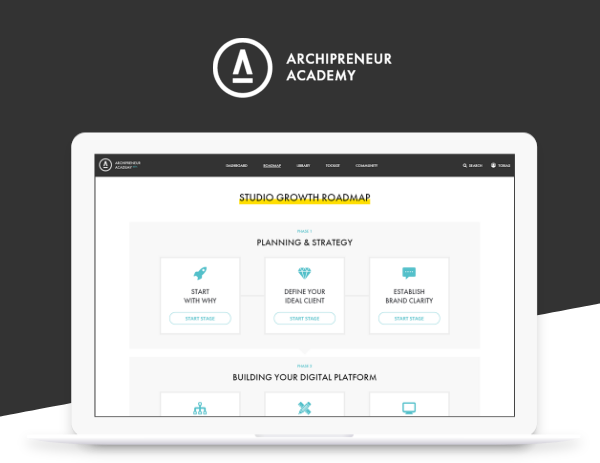
JOIN THE
ARCHIPRENEUR ACADEMY
- 9 Stage Studio Growth Roadmap
- Library of In-Depth Courses
- Checklists and Workbooks
- Quick Tips and Tutorials
- A Supportive Online Community

